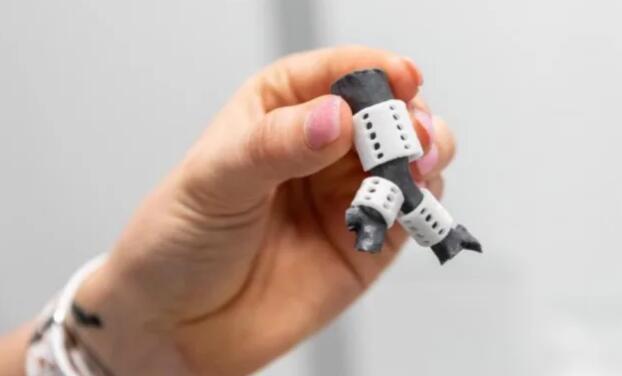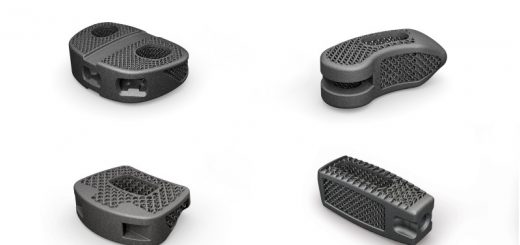3D-Printed Tracheal Splints May Revolutionize Pediatric Care
While the impact of 3D printing has often been more prominent in a manufacturing setting, its real-world benefits also greatly impact health care. From custom prosthetics to skin for burn victims, 3D printing is helping make what once seemed impossible a reality, as well as reducing costs and producing less inexpensive complex parts.
Recently, a team of doctors at Children’s Healthcare of Atlanta, Ga., used this revolutionizing technology for a 7-month-old patient. The team completed the first such procedure in the state by placing three custom 3D-printed tracheal splints—created by biomedical engineers at the Georgia Institute of Technology—in the infant, who battles life-threatening congenital heart disease and tracheo-bronchomalacia. The surgery took 10 hours to complete.

Custom 3D-printed tracheal splints were used in a procedure to help save an infant’s life. Image courtesy of the Georgia Institute of Technology.
The infant had been hospitalized for six months and was experiencing repeated airway collapses, which current surgery methods could not fix. Although the 3D-printed splints are new and still under development, the doctors were able to obtain emergency clearance from the U.S. FDA to move forward with the procedure. The splints will work to expand the child’s trachea and bronchus. Within a few years, they will be absorbed into the patient’s body.
“We are so fortunate to work with a leading engineering school like Georgia Tech to find innovative, potentially life-saving treatment options for our patients,” said Donna Hyland, Children’s Healthcare of Atlanta president and CEO. “This is a great example of how aligning Children’s clinical expertise with the missions of our research collaborators can improve patient outcomes. Research that can be translated into more effective care at the bedside is why our collaboration with Georgia Tech is so important for the future of pediatric care in Georgia.”
Although this was a first in Georgia, it was the 15th time a pediatric patient has received 3D-printed tracheal splints. Scott Hollister, Ph.D., developed the process while at the University of Michigan. He now holds the Patsy and Alan Dorris Endowed Chair in Pediatric Technology, a joint initiative supported by Georgia Tech and Children’s Healthcare of Atlanta.
“The possibility of using 3D printing technology to save the life of a child is our motivation in the lab every day,” said Hollister, who is also the director of the Center for 3D Medical Fabrication at Georgia Tech and a professor in the Wallace H. Coulter Department of Biomedical Engineering at Georgia Tech and Emory University. “We’re determined to develop innovative solutions that meet the needs of Georgia’s most complex pediatric patients.”
To begin the procedure, the Georgia Tech team worked with a CT scan of the patient’s airway to design and create precise splints for the surgical team. Once the 3D model is designed, the 3D printer uses polycaprolactone (PCL) powder followed by laser tracing the pattern to fuse the particles.
Hollister and his team of biomedical engineers worked with the Global Center for Medical Innovation (GCMI) to create several versions of the splint in different sizes. This helped ensure that the team of doctors had the perfect fit available during the procedure.
Source:engineering.com




Recent Comments